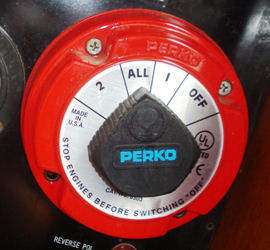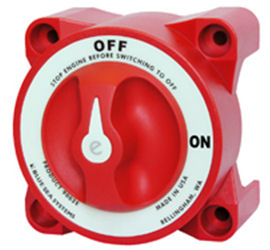Solving the Battery Switch Dilemma
I’m amazed at how many experienced boaters are unsure of what to do with their “1-2-BOTH” battery switch. It’s a very simple mechanism and, used properly, can save you time, money, and stress. The vast majority of boaters I’ve asked say something like, “I’m not really sure what to do with it, so I just leave it in the 'BOTH' position.” A little clarification here will go a long way.

Assuming your boat is of recent ABYC standard construction, that means you’ve got two batteries, a 120-volt AC (shore power) charger, and one engine with an alternator. Your system works something like this: the battery you’ve selected powers all of your 12-volt DC systems -- engine ignition, lights, electronics, stereo, etc.
The alternator will charge your battery back through the switch, so the battery you’re using underway will be constantly recharged while the engine is running. Once you shut the engine down, the same battery will be providing power. If you’re hooked up to shore power, both batteries will be recharged, regardless of where the switch is positioned, even if it’s in the “OFF” position.
If the switch is in the “BOTH” position and one battery is nearly at a full charge and one is flat, the alternator will “read” the higher of the two, and the flat battery will never be charged.
Now let’s say you’ve put the switch in the “BOTH” position and you’ve spent the day anchored, with the refrigerator on and the stereo blasting. After dinner, you had lights on, and now you’re ready to head for home in the moonlight. You go to start the engine but you can’t since you’ve discharged both batteries. Nothing to do but call Sea-Tow!
How do we prevent this? Use only one battery at a time. On odd days, use Battery #1, then use Battery #2 on even days. Assuming we’ve spent the same day on the water using Battery #1, at the end of the day we can use fully charged Battery #2 to start the engine. Over the course of the season, you’ll use both batteries equally. NEVER use the “BOTH” position except to parallel both batteries if they’re both flat, almost like an attempt to “jump-start” your own engine. And don’t forget to pay attention to the warning, which says, “Stop engines before switching 'OFF'".
